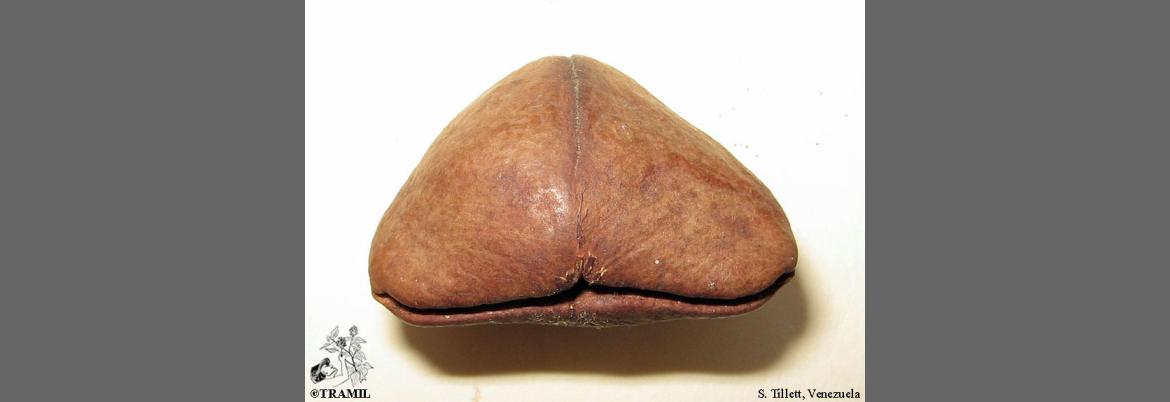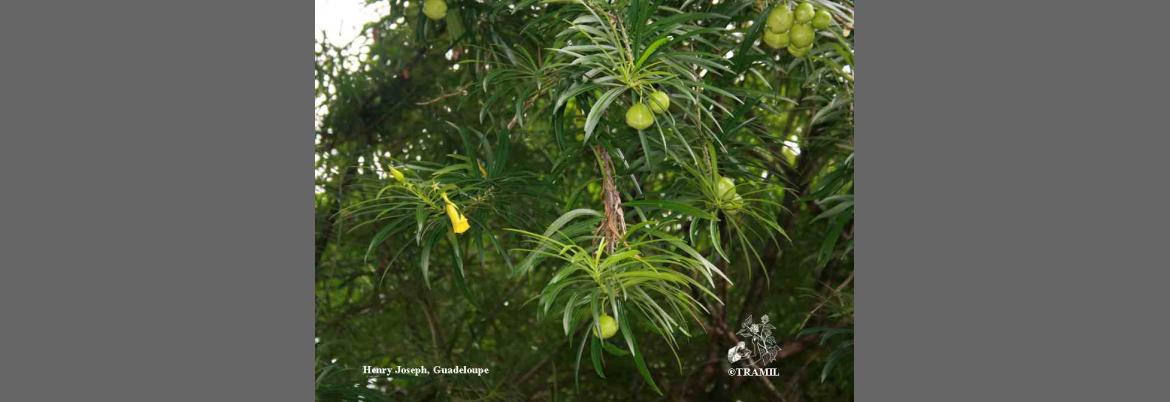1 WENIGER B, 1987-88
Encuesta TRAMIL. enda-caribe, Santo Domingo, Rep. Dominicana.
2 WENIGER B, SAVARY H, DAGUIHL R, 1984
Tri phytochimique de plantes de la liste TRAMIL. Laboratoire de chimie des substances naturelles, Faculté de Médecine et de Pharmacie, Université d'Etat d'Haïti, Port au Prince, Haïti.TRAMIL I, Port au Prince, Haïti, Fac. de Médecine/enda-caribe.
3 SIDDIQUI S, SIDDIQUI BS, ADIL Q, BEGUM S, 1992
Cardenolides and triterpenoids of the leaves of Thevetia neriifolia. Phytochemistry 31(10):3541-3546.
4 BEGUM S, ADIL Q, SIDDIQUI BS, SIDDIQUI S, 1993
Constituents of the leaves of Thevetia neriifolia. J Nat Prod 56(4):613-617.
5 ABE F, YAMAUCHI T, WAN ASC, 1992
Cardiac glycosides from the leaves of Thevetia neriifolia. Phytochemistry 31(9):3189-3193.
6 ABE F, YAMAUCHI T, YAHARA S, NOHARA T, 1994
Glycosides of 19-formylthevetiogenin and 5-alpha-thevetiogenin from Thevetia neriifolia. Phytochemistry 37(5):1429-1432.
7 ABE F, YAMAUCHI T, NOHARA T, 1992
C-Nor-D-homo-cardenolide glycosides from Thevetia neriifolia. Phytochemistry 31(1):251-254.
8 ABE F, YAMAUCHI T, YAHARA S, NOHARA T, 1995
Minor iridoids from Thevetia peruviana. Phytochemistry 38(3):793-794.
9 DANIEL M, SABNIS S, 1978
Chemotaxonomical studies on Apocynaceae. Indian J Exp Biol 16(4):512-513.
10 GRIFFITHS L, 1959
On the distribution of gentisic acid in green plant. J Exp Biol 10:437-442.
11 ABE F, IWASE Y, YAMAUCHI T, YAHARA S, NOHARA T, 1995
Flavonol sinapoyl glycosides from leaves of Thevetia peruviana. Phytochemistry 40(2):577-581.
12 LI CC, 1962
Pharmacological investigation of foliaThevetia peruviana Merr. Yao Xue Xue Bao 13:753-756.
13 THORP RH, WATSON TR, 1953
A survey of the occurrence of cardio-active constituents in plants growing wild in Australia. I. Families Apocynaceae and Asclepiadaceae. Aust J Exp Biol 31(5):529-532.
14 WEE YC, GOPALAKRISHNAKONE P, CHAN A, 1988
Poisonous plants in Singapore - a colour chart for identification with symptoms and signs of poisoning. Toxicon 26(1):47.
15 FERNANDO R, 1988
Plant poisoning in Sri Lanka. Toxicon 26(1):20.
16 EDDLESTON M, ARIARATNAM CA, SJOSTROM L, JAYALATH S, RAJAKANTHAN K, RAJAPAKSE S, COLBERT D, MEYER WP, PERERA G, Attapattu s, kularatne sa, sheriff mr, warrell da, 2000
Acute yellow oleander (Thevetia peruviana) poisoning: cardiac arrhythmias, electrolyte disturbances, and serum cardiac glycoside concentrations on presentation to hospital. Heart 83(3):301-306.
17 PHADKE MV, NAIK SG, 1963
Yellow oleander (Cerebra thevetia) poisoning. (Case report). Indian J Child Health 12:210-213.
18 Abreu Matos FJ, 2000
Plantas medicinais, guía de seleção e emprego de plantas usadas em fitoterapia no nordeste do Brasil. 2ª ed. Fortaleza, Brasil: UFC Imprensa universitária. p97.












